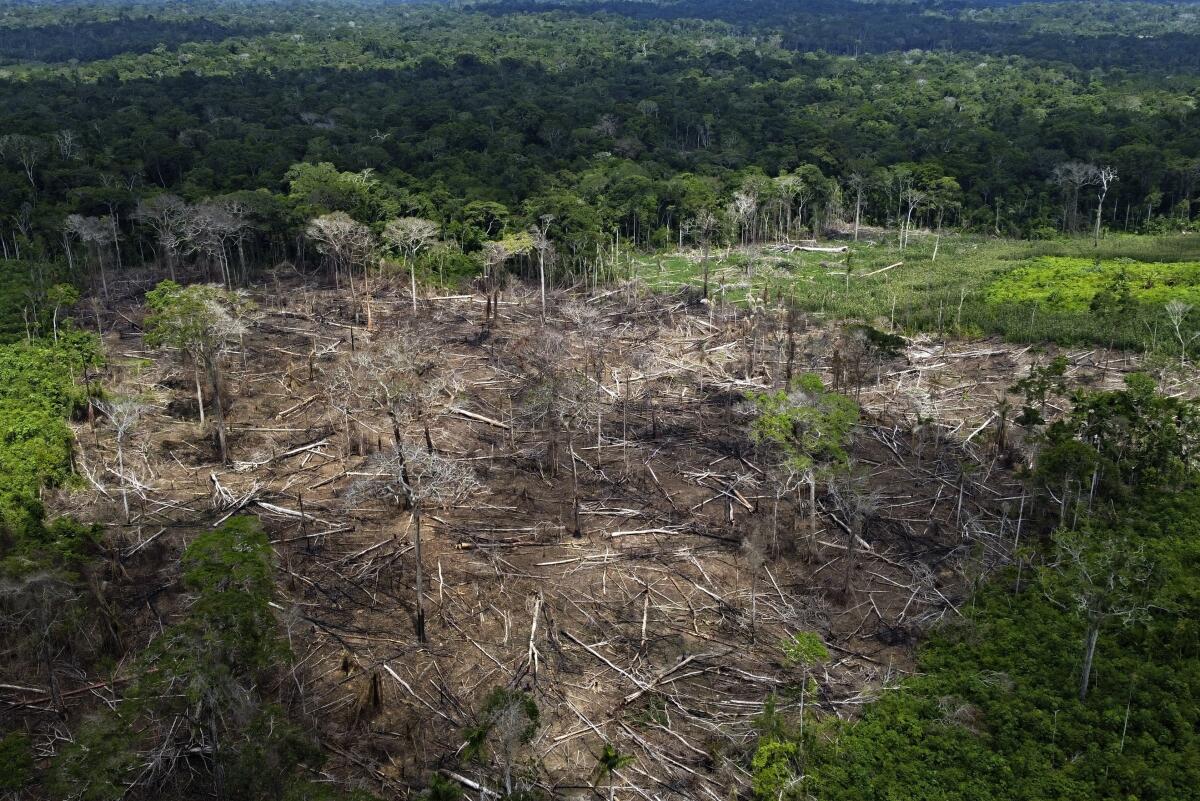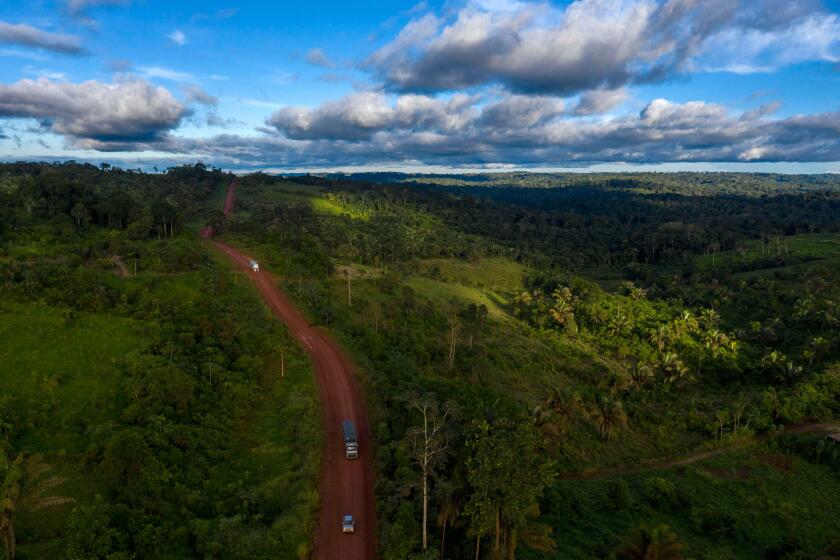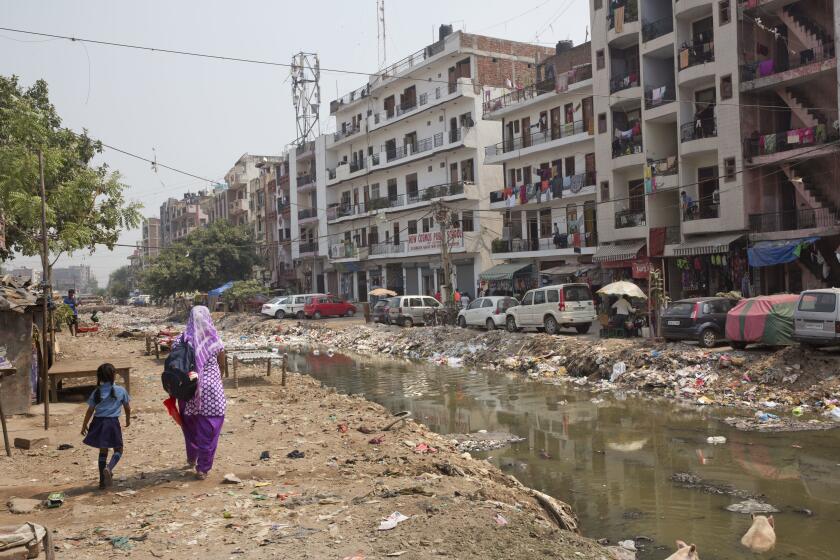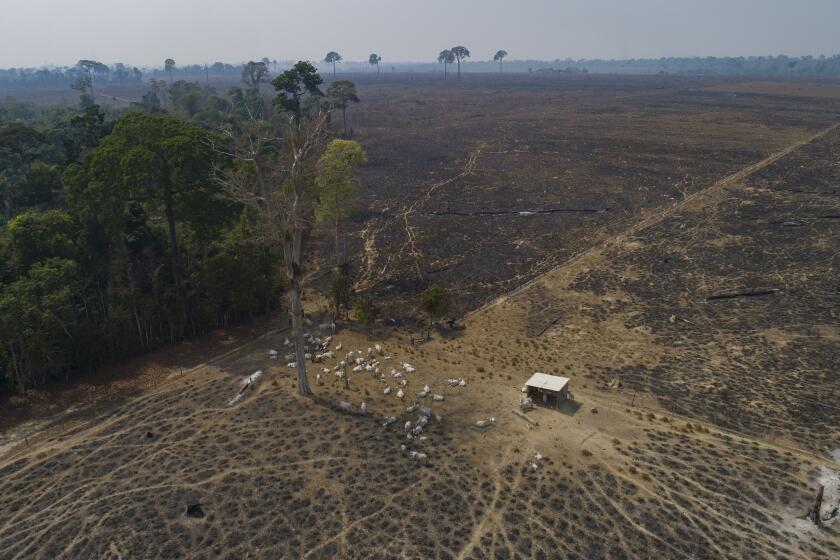Opinion: Why disappearing trees are so bad for our climate — and health

- Share via
Beside my childhood home, there lies a forest. I’d long thought it a stretch to call it that, even though a sign beside a small and inviting break in the wall of beech and maple trees said otherwise. It covers no more than 20 acres. A city bus runs along its western edge.
Over the years, however, my outlook shifted. As the neighborhood grew, and as each autumn wrestled the canopy of gold and crimson to the ground, exposing a sinewy understory, that humble patch of trees stayed. It held a certain magic: of permanence. I imagine when most people think of forests they summon a similar sense of everlastingness — the ability to endure a world in flux.
But the permanence of this little forest on the edge of Toronto, it sadly turns out, is not the story of most trees.
After decades of research, the Brazilian government now knows what small farmers need to do instead of clear-cutting. But making the transition will be expensive.
Our forests are disappearing. According to a recent report from the World Wildlife Fund, 6.6 million hectares of forest were lost in 2022. It’s a mind-boggling statistic, especially since it represents 21% more forest cover than should have been lost that year to keep pace to end deforestation by 2030 — a pledge from the 2021 United Nations climate conference (COP26) in Glasgow, Scotland. At last year’s COP28 in Dubai, world leaders renewed their pledge to reverse deforestation.
Yet forests are still being cleared at a dizzying pace. In 2022, the world lost more than 11 soccer fields of tropical forest per minute.
Environmental crises are for many people an abstraction, and so can seem their repercussions. But I am a physician in infectious diseases, and my first instinct when looking at a forest is to see it through the lens of a microbe. Microbes can bring diseases to humans, and for that reason the World Health Organization has applied a philosophy to them called One Health. Simply, it’s a belief that the fitness of humans, animals and the environment are one and the same — inextricably linked.
Our warming world means billowing fires, breaking glaciers — and deadlier diseases.
Trees play a seminal role: Removing a forest can push forest-dwelling animals into human environs, sometimes bringing with them a pathogen. That chain of events has been tied to Ebola flare-ups in Central and West Africa and the upswing of Lyme disease in the northeastern United States. And it harms animals too: In subtropical parts of Australia where forests are blithely cleared, bats experience profound stress from human-induced land change. Access to the diet of their native habitats is taken away, and in a nutritionally deprived state, they are known to shed greater amounts of the Hendra virus — which can pass on to horses and then humans, with high fatality rates.
After the loss of a forest, it’s not just what is added to our lives that can pose a problem. It’s also what’s taken away. Forests have traditionally functioned as “carbon sinks.” The Earth’s trees absorb more than 7 billion metric tons of carbon dioxide — about a fifth of what the world lets out into its atmosphere — and release it back as oxygen or bind it into sugars that form their roots, branches and leaves. Felling a forest unlocks this carbon vault. Some parts of the Amazon are so razed that they’ve become carbon sources — leeching more carbon than they soak up. About 12% of the global greenhouse gas emissions that warm the planet are estimated to derive from deforestation.
Then there’s evidence showing the extent to which forests influence our mental health. Poorer air quality, a byproduct of deforestation, is linked to higher rates of depression and anxiety. By contrast, research has found that the more a country’s landmass is covered by forests, the lower its prevalence of mental health disorders. In the 1980s, Japan even pioneered a form of therapy around trees: shinrin-yoku, also known as “forest bathing,” which seeks to harness psychologically restorative effects from being outdoors. The practice has become fairly popular in California, and here in Canada some doctors prescribe it.
Deforestation in Brazil’s Amazon rainforest dropped by one-third in the last six months since Luiz Inácio Lula da Silva became president again.
So what can be done? Saving the world’s forests requires understanding the cultural and economic motivations that clear them in the first place.
Some solutions have to be localized to the millions of people who are still sustained by forests. In Borneo, for instance, some Indigenous communities with few economic options turn to illegal logging to make ends meet. But researchers found that subsidizing a local clinic to make healthcare more affordable and accessible reduced this problem. In some logging-dependent communities, forest charities such as Alam Sehat Lestari buy people’s chainsaws in return for a zero-interest loan and support in shifting to more environmentally sustainable businesses, like beekeeping or fishing.
Ultimately, however, three-quarters of global deforestation is driven by agriculture — a reality that calls for ambitious legislation. The European Union’s regulation on deforestation-free supply chains imposes trade embargoes on products such as palm oil, cattle and soy that are frequently produced on illegally deforested lands, and in the U.S., the FOREST Act is a bipartisan bill that would take a similar approach. Brazil has already shown some promise in slowing the deforestation trend.
It’s easy enough for leaders to make pledges. What remains to be seen is if they’ll be able to see the forest from the trees and produce real change rather than an empty promise.
Arjun V.K. Sharma is a physician and writer. @ArjunVKSharmaMD
More to Read
A cure for the common opinion
Get thought-provoking perspectives with our weekly newsletter.
You may occasionally receive promotional content from the Los Angeles Times.













